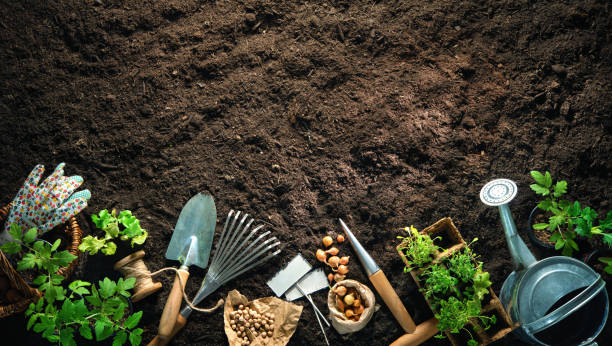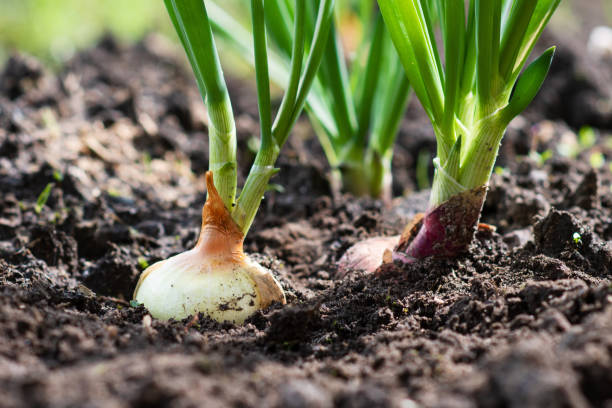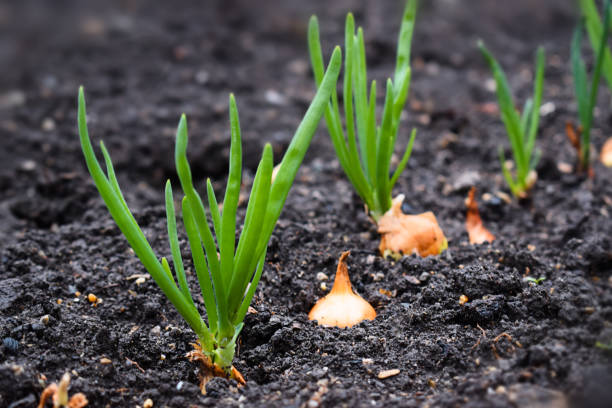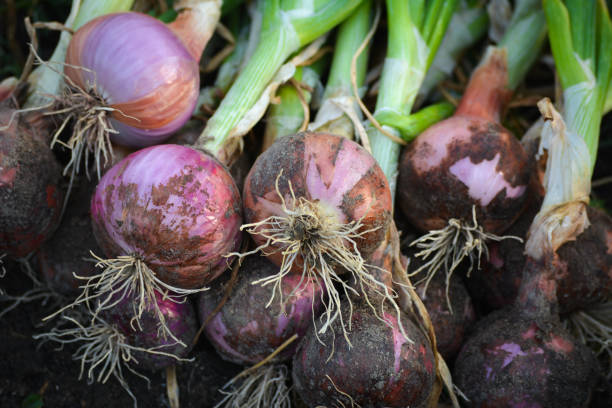
Introduction
Discover the benefits of growing onions from scraps while promoting eco-friendly and cost-effective gardening. This all-inclusive guide will take you through each step of growing onions from kitchen waste, showcasing the advantages and offering valuable tips for a successful harvest.
Benefits of Reusing Onion Ends
In today’s fast-paced world, sustainable gardening practices are more important than ever. One such practice is reusing onion ends to grow fresh, new onions. This innovative approach offers numerous benefits that not only contribute to a greener planet but also promote self-sufficiency and resourcefulness. Delving deeper into these advantages, we discover how reusing onion ends can have a profound impact on our lives and the environment.
First and foremost, reusing onion ends saves money by reducing the need to purchase new onion bulbs or sets. The cost of buying vegetables, particularly organic ones, can add up quickly.
By growing onions from kitchen scraps, we’re making the most out of something we would otherwise discard, stretching our grocery budget while still enjoying fresh, homegrown produce. This approach supports financial responsibility and allows us to allocate resources to other essential needs.
Furthermore, reusing onion ends minimizes kitchen waste and helps reduce our contributions to landfills. Waste management is a pressing global issue, as the volume of waste produced continues to rise.
By reusing onion ends, we take a small but meaningful step towards lowering our individual waste production. This, in turn, contributes to a healthier planet and encourages us to be more mindful of our consumption and waste generation habits.
In addition to reducing waste, growing onions from scraps supports sustainable and environmentally conscious gardening practices. Traditional agriculture methods can lead to soil degradation, excessive water use, and deforestation. By cultivating onions at home, we limit our reliance on large-scale, environmentally taxing agricultural practices. This form of urban gardening plays a crucial role in promoting a greener, more sustainable future.
Growing onions from scraps also fosters self-sufficiency and independence. By taking control of our food production, we become less reliant on external sources and learn to appreciate the effort that goes into growing our own food.
This newfound appreciation often translates into healthier eating habits, as we’re more inclined to consume vegetables we’ve personally nurtured from scraps to harvest. Moreover, self-sufficiency in gardening can foster a sense of pride and achievement, improving our overall mental well-being.
Another remarkable benefit of reusing onion ends is the opportunity to experiment with different onion varieties. From red and yellow onions to shallots and green onions, there’s a diverse range of flavors and colors waiting to be discovered. Growing multiple varieties can add visual appeal and variety to our garden and, ultimately, our dinner plate. This diversity not only enriches our culinary experiences but also serves as a conversation starter with fellow gardening enthusiasts.
Finally, reusing onion ends to grow new plants is an excellent way to educate and inspire others, particularly the younger generation. Teaching children about sustainable gardening practices encourages them to become environmentally responsible adults. Growing onions from scraps is a simple and accessible introduction to gardening that can spark a lifelong interest in sustainable living and resourcefulness.
In conclusion, the benefits of reusing onion ends extend far beyond the obvious advantages of saving money and reducing waste. By embracing this sustainable gardening practice, we contribute to a greener planet, foster self-sufficiency, promote healthier eating habits, and inspire future generations. Reusing onion ends is a small yet powerful step towards a more sustainable and resourceful way of living. So, let’s give those onion ends a new purpose and reap the remarkable benefits they have to offer.
Required Materials

Embarking on the journey of growing onions from scraps requires a careful selection of essential materials. Understanding the role of each material and its significance in the process will help ensure a successful and satisfying gardening experience.
Onion scraps:
Healthy onion scraps are the foundation for growing new onions. Choose onions with a robust root base, free from mold or damage. The root base is the source of future growth, and selecting healthy scraps will provide a better chance of success. When preparing the onion scraps, cut off the bottom inch of the onion, ensuring the roots remain intact and remove any excess layers or dried skin. Allow the onion scraps to dry for a day or two before planting to help prevent rotting. By starting with healthy onion scraps, you set the stage for robust growth and a bountiful harvest.
Container or pot:
The choice of container or pot is crucial, as it directly impacts the health of your growing onions. Containers with drainage holes prevent waterlogged soil, which can lead to root rot and other issues. Proper drainage is essential to maintain a suitable moisture level for onion growth.
Moreover, consider the size of the container, as it should provide adequate space for the onion roots to expand and grow without becoming overcrowded. A suitable container promotes healthy growth and minimizes potential problems throughout the growing process.
Soil:
The soil mix you choose plays a critical role in the successful growth of onions from scraps. A well-draining soil mix, such as a combination of potting soil and perlite or vermiculite, allows excess water to drain away and prevents waterlogged soil.
This type of soil mix helps maintain the appropriate moisture balance for onion growth. Additionally, onions prefer a slightly acidic to neutral soil pH (between 6.0 and 7.0). Ensuring your soil falls within this pH range will create a conducive environment for your onions to thrive.
Water:
Water is essential for the survival and growth of your onions. Maintaining consistently moist soil is crucial for onion development, as too little or too much water can lead to issues such as stunted growth or rot.
Monitoring soil moisture levels and adjusting your watering routine accordingly will ensure that your onions receive the necessary hydration for healthy growth. It is important to use a watering can or another method that allows for the even distribution of water, preventing the soil from becoming too wet or too dry in certain areas.
Optional:
Fertilizer: While not strictly necessary, using a fertilizer can significantly enhance the growth and overall health of your onions. A slow-release organic fertilizer can be mixed into the soil before planting, providing essential nutrients to the onion scraps throughout the growing process.
Alternatively, a balanced liquid fertilizer can be applied every few weeks to support healthy growth. The additional nutrients provided by fertilizers will contribute to the development of larger, more flavorful onions. When using fertilizers, be sure to follow the manufacturer’s instructions to avoid over-fertilizing, which can hinder onion growth.
understanding the importance and role of each essential material for growing onions from scraps is key to a successful harvest. By selecting healthy onion scraps, using an appropriate container and soil mix, maintaining proper water levels, and optionally utilizing fertilizer, you create an environment in which your onions can thrive. These materials, when chosen and used correctly, will contribute to a rewarding and sustainable gardening experience.
Choosing and Preparing Onion Scraps

Choosing and preparing onion scraps for regrowth is a vital step in the process of growing onions from kitchen waste. By carefully selecting healthy onion ends with the potential for new growth and adequately preparing them, you can increase the likelihood of a successful harvest. The following tips will guide you through the process of selecting and preparing onion scraps for regrowth.
Select healthy onion ends:
When choosing onion ends, opt for onions that have a robust root base without any signs of mold, rot, or damage. A healthy root base is critical for successful regrowth, as it will provide the energy and nutrients required for the development of new onions. Also, look for onions with a bit of green sprouting from the top, as this indicates that the onion is still viable and capable of growing.
Cut off the bottom portion:
To prepare the onion scraps, cut off the bottom inch of the onion, making sure to leave the roots intact. The roots are essential for absorbing water and nutrients from the soil, and ensuring their health will give the onion a better chance of regrowing. The cut should be clean and straight, so the onion can sit evenly in the soil and establish a strong root system.
Remove excess layers and dried skin:
After cutting the onion bottom, remove any excess layers or dried skin from the onion end. This will help prevent potential issues such as mold or rot, which can hinder the growth of new onions. Removing the outer layers also exposes the inner layers of the onion, allowing them to receive more light and air, which will help stimulate growth.
Allow the onion scraps to dry:
Before planting, let the onion scraps dry for a day or two. This will help reduce the chances of rotting once the onion ends are placed in the soil. Allowing the onion scraps to dry creates a protective barrier that helps prevent the entry of pathogens or pests into the onion tissue.
Inspect the onion scraps before planting:
Before planting the onion scraps, give them a final inspection to ensure they are still in good condition. If any signs of rot, mold, or damage have developed, discard those onion scraps and select new ones to avoid introducing potential problems to your growing onions.
By carefully selecting and preparing onion scraps for regrowth, you create a solid foundation for the successful cultivation of new onions. Properly chosen and prepared onion scraps will lead to healthier plants and a more bountiful harvest, contributing to a rewarding and sustainable gardening experience.
Prepping the Container and Soil

The right container and soil selection can significantly affect your onion’s growth. Keep these points in mind while setting up:
- Pick a container with drainage holes to avert waterlogged soil and root rot
- Choose a well-draining soil mix, such as a combination of potting soil and perlite or vermiculite
- Fill the container with soil, reserving a few inches at the top for hassle-free watering
- Optionally, blend a slow-release organic fertilizer into the soil before planting
Planting Onion Scraps

With your materials prepped, it’s time to plant the onion scraps:
- Position the onion scraps root-side down on the soil surface, spacing them approximately 2-3 inches apart
- Delicately cover the onion scraps with an inch of soil, ensuring the roots make solid contact with the soil
- Water the newly planted onion scraps, maintaining evenly moist but not saturated soil
Caring for Growing Onions
Proper care is vital for your onions to thrive:
- Provide ample sunlight by placing the container in a location with 6-8 hours of daily sunlight
- Maintain consistently moist soil by watering the onions regularly but avoiding overwatering, which can cause rot
- Monitor for pests or diseases, addressing them promptly. Common onion pests include thrips and onion maggots, while diseases can involve onion blight or downy mildew
- Optionally, apply a balanced liquid fertilizer every few weeks to encourage healthy growth
Harvesting New Onions

This comprehensive guide will walk you through each step of harvesting new onions grown from scraps, ensuring a successful and satisfying yield.
Observe the Onion Foliage
Before harvesting your onions, monitor the state of their foliage. When the leaves begin to turn yellow and fall over, this is usually an indication that the onions are ready for harvest. Healthy, mature onions will have a firm bulb and slightly dry outer skin.
Test the Soil Moisture
Check the soil moisture before proceeding with the harvest. It is best to harvest onions when the soil is slightly dry, as this will make it easier to remove the onions from the ground and minimize the risk of damaging them.
Loosen the Soil
Gently loosen the soil surrounding the onion using a garden fork, hand trowel, or your fingers. Be careful not to damage the bulb or roots during this process. Loosening the soil helps to make the extraction of the onion easier and reduces the chances of damage.
Lift the Onion
Carefully lift the onion out of the soil, gripping it as close to the base as possible. If the onion is resistant, use a garden fork or hand trowel to gently pry it out of the ground. Be cautious not to pierce or damage the onion bulb during this process.
Remove Excess Dirt
Once the onion has been removed from the soil, gently brush off any excess dirt from the bulb and roots. Avoid using water to clean the onions, as moisture can lead to rot during the curing process.
Allow Onions to Cure
To ensure proper storage and flavor development, allow the harvested onions to cure in a well-ventilated area for 2-3 weeks. The ideal curing location is dry, shaded, and has good airflow. Place the onions on a wire rack, mesh, or an elevated surface that allows air circulation. During the curing process, the onion’s outer skin will dry out, and the neck will seal, preventing moisture and pathogens from entering the bulb.
Inspect the Onions
After the curing process, inspect the onions for any signs of rot, mold, or damage. Discard any onions that show signs of spoilage to prevent contamination of the healthy onions during storage.
Prepare Onions for Storage
To prepare the onions for storage, trim the roots and remove any loose or dried outer layers. Leave an inch or two of the dried stalk on the onion to help prevent the entry of pathogens. Do not remove the entire stalk, as doing so can expose the onion to decay.
Store the Onions
Store the cured onions in a cool, dark, and dry location with good ventilation. Use a mesh bag, wire rack, or slotted crate to ensure proper airflow around the onions. Proper storage conditions will help prolong the shelf life of your onions and maintain their quality.
By following this detailed step-by-step guide, you will be able to harvest and store your homegrown onions successfully. Enjoy the fruits of your labor and take pride in having grown onions from scraps, contributing to a sustainable and rewarding gardening experience.
Conclusion
Growing onions from scraps is an easy and gratifying way to contribute to sustainable gardening practices. By following this step-by-step guide, you’ll not only save money but also reduce waste and take pleasure in harvesting your homegrown onions. So, give new life to those onion ends and





